How Boston Is Beating Cancer
It’s the word no patient wants to hear—The Big C. But thankfully, right here in Massachusetts, the world’s finest physicians are creating the weapons to fight it. Here are 20 ways we're collectively battling the disease.
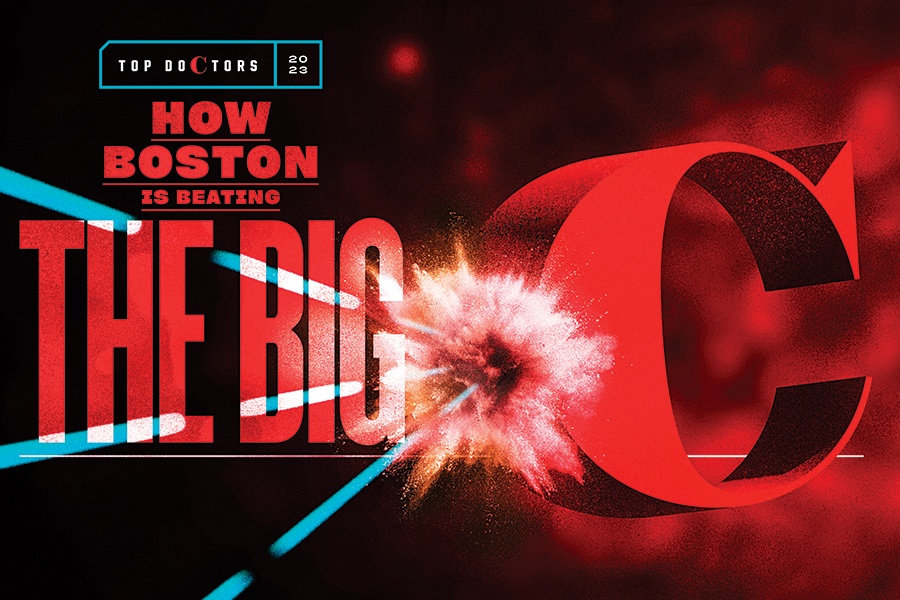
Illustration by Benjamen Purvis
Cancer. It’s the word no patient wants to hear. But thankfully, right here in Massachusetts, the world’s finest physicians are creating the weapons to fight it. Whether you’re dealing with a diagnosis or helping someone who is, here are 20 ways we’re collectively battling the disease.
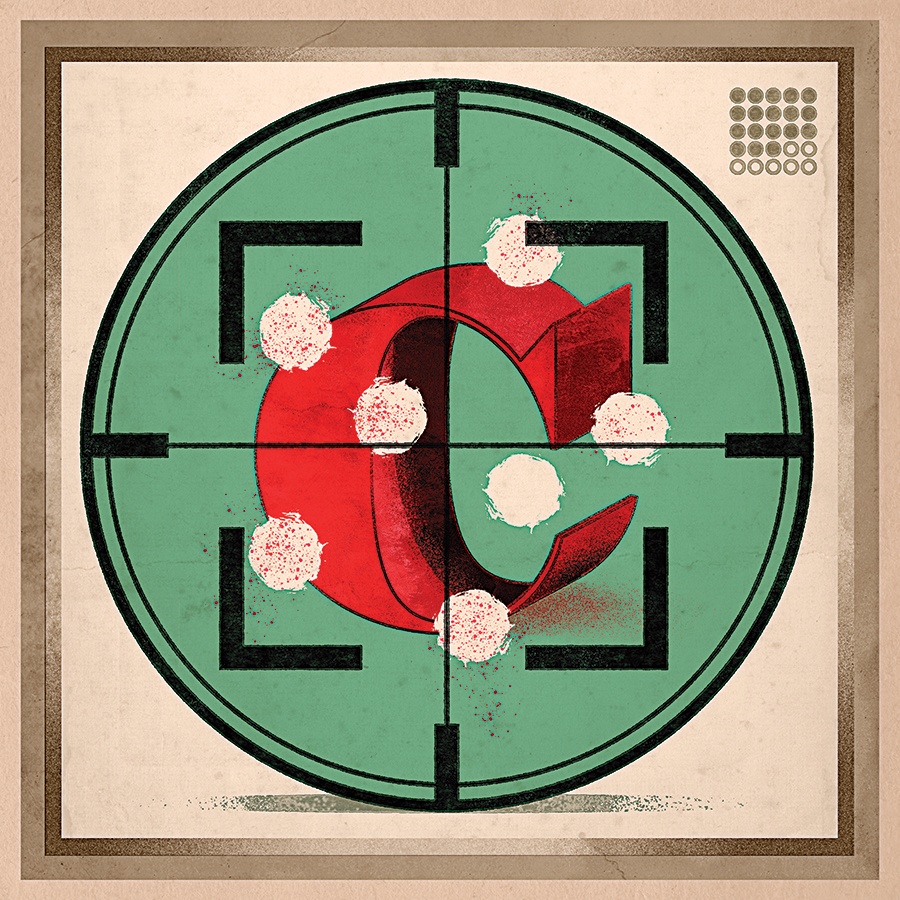
Illustration by Benjamen Purvis
An Unlikely (Tiny) Weapon
Koch Institute for Integrative Cancer Research at MIT
For many newly diagnosed cancer patients, chemotherapy drugs conjure thoughts of debilitating side effects, from nausea and fatigue to mouth sores and hair loss. That’s because chemotherapy is a systemic drug, which means it affects not only cancer cells but also healthy ones. Thanks to the Koch Institute for Integrative Cancer Research, though, that may not be the status quo for much longer.
Researchers there are exploring targeted drug delivery through the use of nanoparticles a few thousand degrees smaller than a single strand of human hair. Designed to circulate through the bloodstream, these small but mighty travelers can deliver a chemotherapy drug directly to a target cancer cell without disturbing any healthy cells along the way. In doing so, patients may be able to avoid some of the worst side effects of chemotherapy drugs while still effectively treating their cancer. Essentially, the nanoparticles are “engineered for selectivity,” says Paula Hammond, head of MIT’s Department of Chemical Engineering and a member of the Koch Institute. “We’re trying to get cancer cells to love the nanoparticle and healthy cells to hate it.”
The next challenge? Determining which patients will benefit most from nanoparticle therapy. A recent study conducted in Hammond’s lab may have discovered a new clue: Working with technology from the Broad Institute, researchers analyzed 35 types of nanoparticles against a set of 488 cancer cells. And what they discovered was quite promising: The most aggressive cancer cells were shown to be more receptive to nanoparticle therapy. This means that patients who arguably need this emerging treatment the most would also see the most benefit.
One tricky form of cancer that nanoparticle therapy could revolutionize is ovarian cancer, which is typically detected late and is highly recurrent following the first round of chemotherapy. What’s more, Hammond says that ovarian cancer doesn’t have one clear “Achilles heel” and is often unresponsive to immunotherapy. That’s why her lab is currently working with collaborators at Dana-Farber Cancer Institute and other cancer centers to design nanoparticles that can specifically target ovarian cancer cells and stimulate the patient’s immune system at the same time. That kind of medicine hasn’t been possible in the past. Luckily, the future is here—and it’s tiny.

Photo by Michael Goderre
How I’m Beating Cancer
Lynn Aureli
Age: 26
Treated at: Boston Children’s Hospital
I was diagnosed with acute myeloid leukemia (AML), a blood and bone marrow cancer that causes abnormal white blood cell formation, one week before my 16th birthday. After an ER visit for chest pain that was diagnosed as heartburn, doctors found a blood clot where my IV had been, and I was admitted to Connecticut Children’s Medical Center, where lab work revealed a white blood cell count so high I probably wouldn’t have survived if it had been caught a few days later. Two days later, I started chemotherapy. At the time, I didn’t understand how serious it was. But today, working on the inpatient side as an oncology nurse at Dana-Farber, I know treatments don’t always move that quickly after diagnosis.
I had to go through four rounds of chemotherapy in Connecticut before the cancer cell count in my bone marrow fell under the 5 percent threshold that qualified me for a bone marrow transplant. When I was in the middle of chemotherapy, I also harvested my eggs—which, at the time, was really unheard of to do. Having a baby isn’t on my mind right now, but to have that bit of hope is amazing.
In November 2012, I had my bone marrow transplant at Boston Children’s Hospital. We found my donor, Andrew, through the national bone marrow registry, Be the Match. I got out of the hospital right before Christmas and stayed at the Ronald McDonald House, now the Boston House, in Brookline. About nine months later, I was able to return to school in-person. It felt really good to be back, but it was also difficult. I was still very fatigued. I had a puffy face and weight gain from steroids, and I didn’t have my hair.
When I hit the one-year and five-year milestones following my transplant, it took a big weight off my shoulders. Looking back on things now, the experience changed me for the better. Within the first month or two following my diagnosis, I knew that I wanted to go into oncology nursing because my nurses treated me not only as a patient but as a friend. That’s what’s so special about the job—you really get to know these patients, their families, and their struggles. Today, I feel so, so lucky to be back in Boston and working at Dana-Farber.
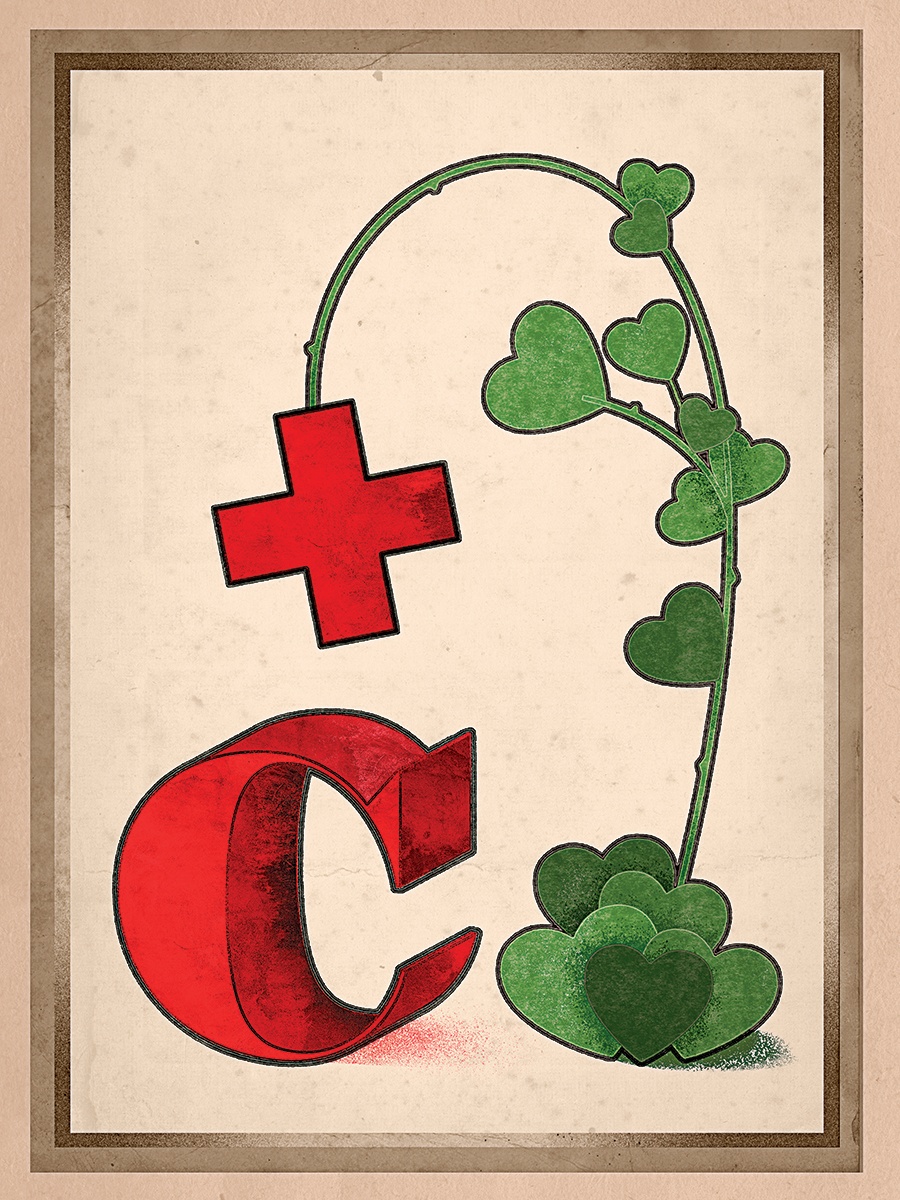
Illustration by Benjamen Purvis
Modern Medicine For All
Boston Medical Center
What if there was a treatment out there that could vanquish your cancer, but you had no way to access it—let alone afford it?
That’s the unfortunate reality facing many non-Hodgkin lymphoma patients. Over the past five years, a powerful new treatment known as chimeric antigen receptor (CAR) T-cell therapy has been rolled out at major cancer centers around the country. The therapy modifies a patient’s own T-cells (the foot soldiers of the body’s immune system) to strengthen their ability to recognize and destroy cancer cells. Boasting a 40 to 50 percent cure rate, the treatment is promisingly effective—but with an average price tag starting at $400,000, it’s also prohibitively expensive and nearly impossible for uninsured or underinsured patients to access.
In 2022, Boston Medical Center (BMC) set out to change that with its very own CAR T-cell Therapy Program, which is now offering a path to a cure for the hospital’s lower income population regardless of their insurance status. “If we could just refer the patient [somewhere else], it would not be a big deal,” says program director Fabio Petrocca, who notes that the initiative (like many others at this safety-net hospital) is funded through grants and philanthropy. “But most of our patients don’t have access to the same services if they go to other hospitals.”
While at presstime, BMC only offered CAR T-cell therapies for lymphoma, the hospital is working hard to expand access to therapies for multiple myeloma as well, which are currently only available at major cancer centers. “Our job is to advocate for BMC patients and make sure that they get access to currently FDA-approved therapies yesterday, not in five years,” Petrocca says.
Fact or Fiction?
Local experts break down three common cancer misconceptions.
MYTH: Antiperspirants cause breast cancer.
REALITY: Don’t sweat it: You can keep your favorite deodorant in your medicine cabinet.
According to Timothy Rebbeck of Dana-Farber and the Harvard T.H. Chan School of Public Health, some brands contain ingredients, such as aluminum, that studies have shown can be cancer-associated in animals. But worrying about exposure to a compound that hasn’t been found to cause cancer in humans is futile. Instead, he recommends focusing on avoiding things that are known to increase your cancer risk, like cigarette smoking.
MYTH: Cancer is a genetic inevitability.
REALITY: Because cancer is the second-leading cause of death in the U.S., it’s common for most people to have some family history of the disease. But that doesn’t necessarily correlate with a hereditary predisposition. “Lung cancer runs in families,” Rebbeck says, but it’s not always genetic. “If you smoke, your relatives are more likely to smoke,” he notes. In fact, Jennifer Shin, a medical oncologist at Mass General, explains that only 5 to 10 percent of cancer diagnoses may have been caused by an inherited genetic trait. And even if you do inherit a gene associated with cancer, that doesn’t mean you’re guaranteed to get it.
MYTH: Darker-skinned people can’t get skin cancer.
REALITY: It’s true that the darker your pigmentation, the lower your risk of developing sun-related skin cancers. But anyone can get skin cancer, Rebbeck says—it’s the type and location that differs. Darker-skinned people most commonly develop skin cancer on the soles of their feet, the palms of their hands, or under their fingernails. What’s more, perpetuating this myth can have adverse effects for patients: Data has shown that non-Hispanic Black Americans are more likely to have low melanoma survival rates, potentially due to a lack of awareness leading to late-stage diagnoses.
It Takes a Village
Dealing with a diagnosis? Here’s who to call when you need a little help.
For financial assistance
Joe Andruzzi Foundation
Rent or mortgage payments. Utilities. Household expenses. It can be tough to keep up with the costs of day-to-day living when you’re focused on battling cancer. Dedicated to financially supporting New England cancer patients and their families, this foundation’s grants are there when the bills just become too much.
For family housing needs
Christopher’s Haven
Located right across the street from Mass General, Christopher’s Haven provides a low-cost, temporary housing solution for pediatric cancer patients and their families while they’re in town for treatment. Best of all? No one has ever been turned away from the Haven due to an inability to pay.
For physical support
YWCA Encore and Livestrong at the YMCA
At the YWCA of Greater Newburyport, participants practice both land and warm-water exercise designed to target areas of the body affected by surgery and treatment. Certified post-rehab instructors at the YMCA of Central Massachusetts, meanwhile, help patients build back strength and muscle mass.
ywcanewburyport.org; ymcaofcm.org.
For emotional support
Support Groups at Dana-Farber and Mass General
With help from compassionate staff members, both Dana-Farber and Mass General bring together people suffering from nearly every form of cancer, as well as groups for patients facing advanced or metastatic cancer, newly diagnosed patients, and young people.
dana-farber.org; massgeneral.org.
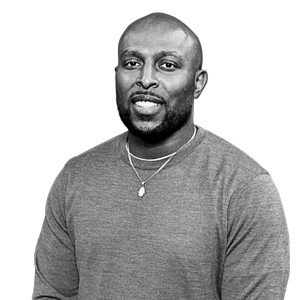
Photo by Lamar Valentina
How I’m Beating Cancer
Lamar Valentina
Age: 38
Treated at: Dana-Farber Cancer Institute
In September 2019, I was driving my son back to Boston, where he lives with my ex-wife, after spending the summer with him in New York. On the drive home, I had some pain in my lower back. Throughout the summer, I’d had some weight loss, but I didn’t think much of it because I was dieting. I also had a lump in my neck next to my collarbone that would come and go. I thought it was a muscle spasm. But when I came back to New York, I couldn’t sleep from the pain, and I checked into the hospital. They did a tumor board and diagnosed it as lung cancer. Not being a smoker, I went for a second opinion and was diagnosed with renal medullary carcinoma (RMC). It’s a very rare cancer most commonly found in people of African descent who have the sickle cell trait.
For treatment, I decided to go back to Boston, specifically Dana-Farber. At the time, I was a completely different person. I was afraid—I didn’t know what was going on with my body—and I was in a ton of pain. When I met with Dr. Brad McGregor, he recommended I start chemotherapy immediately. He and I hit it off right away because I’m in the Air Force, and he served in the Air Force. He was very direct, very blunt, and honest. I felt like he treated me like a family member. I really wouldn’t want to be under the care of anyone else.
The first chemo I was on was a five-hour infusion every two weeks. It was pretty brutal. When you’re introduced to chemo for the first time, it’s a change to your body. But in the first three months, we saw a great response. Originally the cancer was in the lymph nodes, lungs, right kidney, and abdomen area. By the second scan, it had gotten significantly smaller in those areas.
Overall, I’ve done about 44 or 45 sessions of chemotherapy over the past three years. I also had my right kidney removed last March at Brigham and Women’s. We have one spot that’s left in my back, so we recently did 10 cycles of radiation for that.
For me, work has been an outlet and has given me purpose. I’m thankful that my work family allowed me to pursue care in Boston while doing my job in New York. I also completed my bachelor’s degree from Arizona State University while undergoing treatment. I’ve traveled out of the country and just tried to live as normally as possible. I even got to throw out the first pitch at Fenway Park through Dana-Farber. I didn’t want to put my life on hold because of my cancer. —As told to Brittany Jasnoff
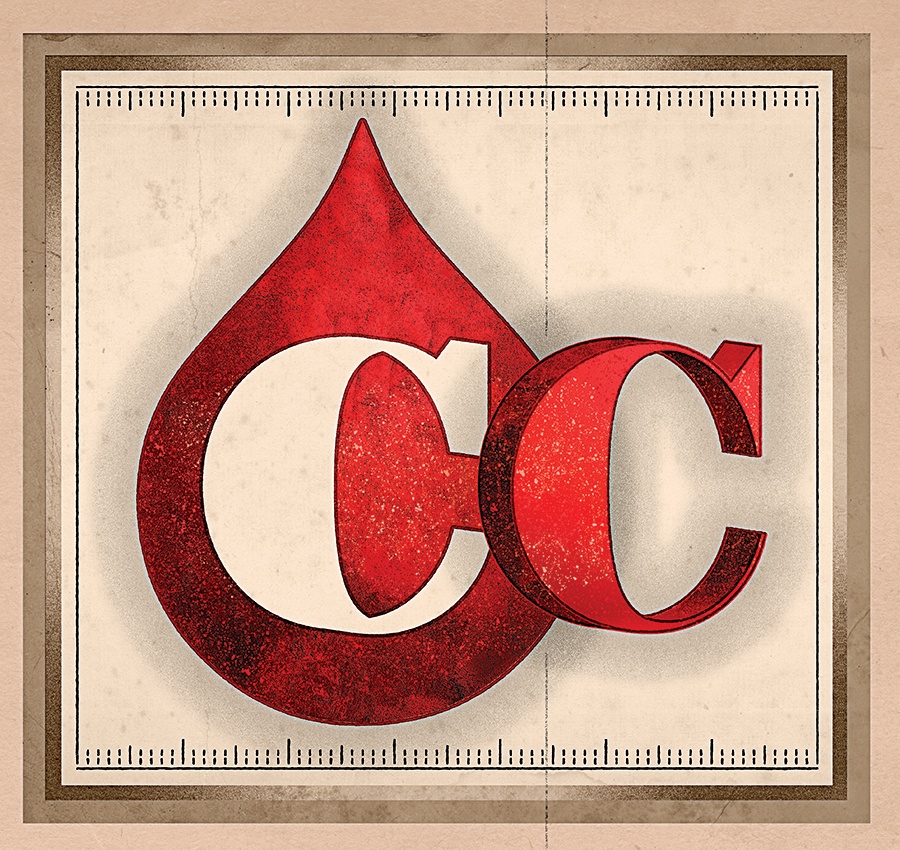
Illustration by Benjamen Purvis
The Testing Problem: Solved
Mass General Cancer Center
You can’t treat cancer if you don’t know you have it. But for many people, getting regular colonoscopies and mammograms can be as terrifying as scaling Mount Everest. Mass General’s new Cancer Early Detection and Diagnostics Clinic, however, is on a mission to make regular cancer screening a lot less daunting. The facility is currently conducting clinical trials for a suite of emerging early-detection and risk-prediction technologies, including some tests that could be as simple as having your blood drawn at an annual checkup.
Among the exploratory blood-based tests in the works are two pioneered by Mass General itself. One evaluates blood protein signatures to determine the presence of cancer in the body. The other uses highly sensitive technology to pick up on rare circulating tumor cells in the blood associated with invasive cancers. The clinic also plans to offer biotech company Grail’s Galleri test, the first multi-cancer early-detection test on the market.
As great as they sound, there are still challenges to widespread adoption of these emerging blood-based screening tests. Clinic director Lecia Sequist explains that finding cancer as early as possible, before it spreads to other parts of the body, is ideal. “But when you have a very small cancer relative to the size of your whole body, any kind of signal is going to be very diluted in the blood,” she says. Picking up on that signal requires highly sensitive technologies and a lot of computing power, something the clinic is actively working on.
Another issue is the question of what to do if a test comes back positive. None of these emerging tests can definitively diagnose a specific form of cancer. Regardless, if a patient’s test comes back positive at the clinic, “we’re going to work with you until we figure [it] out,” Sequist says.
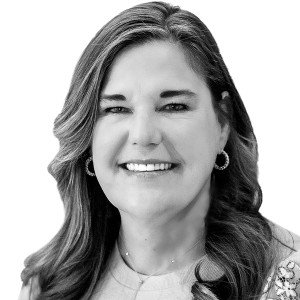
Photo by Sarah Owen Photography
How I’m Beating Cancer
Laura Kipp
Age: 52
Treated at: Mass General Cancer Center
One day, at the blissfully naive age of 25, I was sitting at my desk at work and found a lump on my neck. I was diagnosed with medullary thyroid cancer, and it had already metastasized. I met with lots of different doctors in Cleveland, where I was living at the time, but there was no cure. The cancer was slow-growing, and we just had to hope that it stayed that way. Looking back at it now, I never had any real hope that I was going to live this long.
After the first couple of years, crisis mode died down, and I had to learn how to live with chronic fatigue and gastrointestinal upset. But the most difficult part was emotional. Cancer was a black cloud lingering over every life decision. My husband and I ended up having one biological daughter, but before we decided to try for a baby, I remember thinking, Is it fair to bring kids into the world if I’m not going to be here? After experiencing secondary infertility, we ended up adopting our son at eight weeks old and then went on to adopt three more kiddos.
About 10 years ago, my husband was transferred to Boston for his job. We got in with Lori Wirth at Mass General Cancer Center right away. However, when she was ready for me to try a medicine called sel-percatinib that targets a specific genetic mutation in my tumors, I was afraid to upset the apple cart. The cancer had spread to just about everywhere in my body, but I had learned to live with it. One day, Dr. Wirth asked, Can you trust me, please? This medicine is going to work well for you. Having been through the medical world for so long, it’s hard to find a doctor who’s that brilliant, but also compassionate.
I started the medicine in 2019, and within a week or two, I had a new lease on life physically. Mentally, it was an even bigger gift—it reset me back to 25 again. I’m on it today, and there’s still wiggle room with the dosage. But Dr. Wirth has reassured me that if and when it stops working, there are other options.
Without sounding trite, there have been a lot of gifts from having this cancer. It opened my eyes to so much pain and suffering in the world and what part I needed to play in helping. My husband and I are coming up on 15 years of fostering more than 20 children. It’s the best thing we’ve ever done. We laugh that we’ll never be retired—ever. But it gives the cancer purpose. It gives a positive ending to something that was hard for so long.
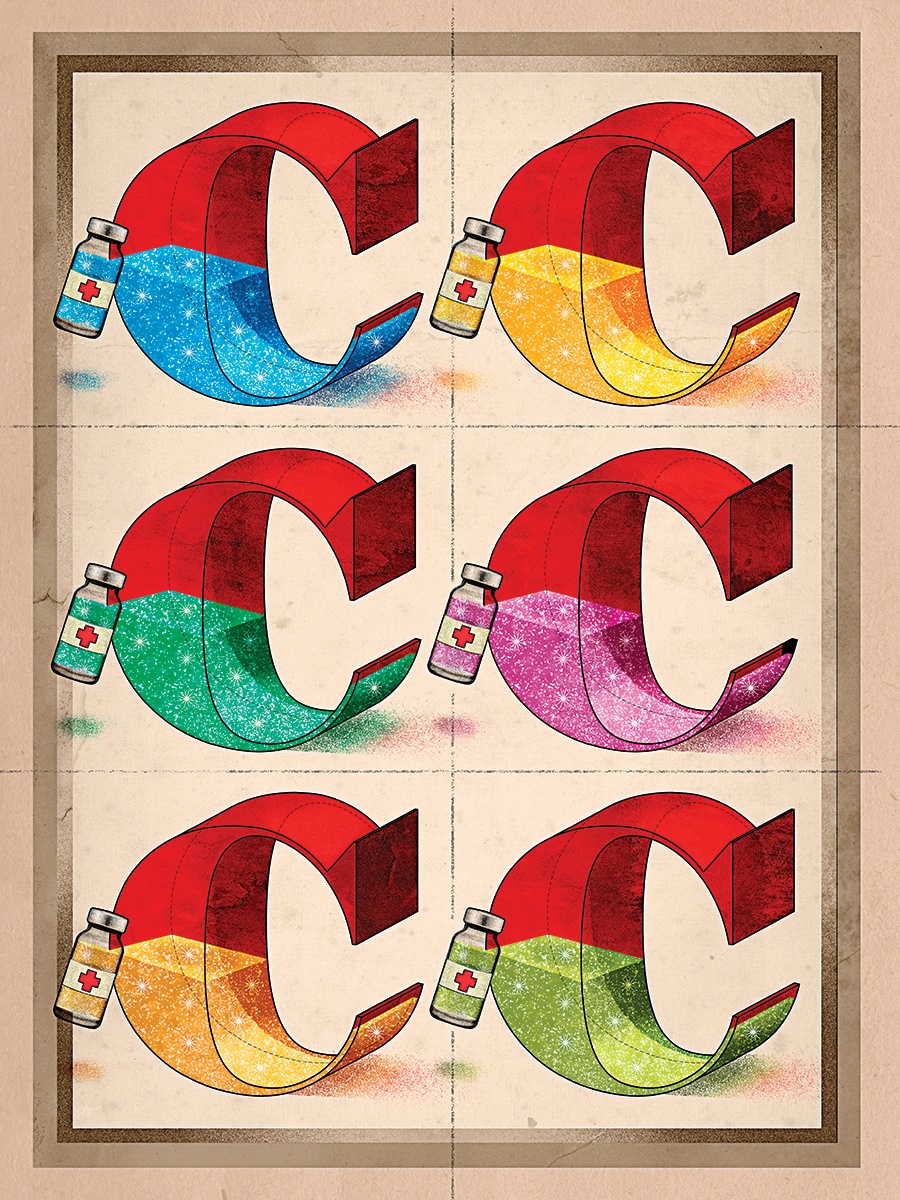
Illustration by Benjamen Purvis
Vaccines Made For You
Dana-Farber Cancer Institute
Back in the early ’90s, when Cathy Wu was a medical resident in the stem cell transplant division of Brigham and Women’s Hospital, she recalls watching in awe as leukemia patients were cured through bone marrow transplants. “Patients were receiving new immune systems from their donor, and those immune cells had the ability to recognize that the leukemia shouldn’t be there,” she recalls. At the time, immunotherapy as a treatment for cancer was still a far-off dream. But Wu was convinced that one day, researchers would unlock the key to generating tumor-specific immune responses without all the complications that come with a donor transplant.
That day is nearly here. As codirector of Dana-Farber’s Center for Personal Cancer Vaccines, Wu and her team are developing NeoVax, a personalized vaccine that mimics the body’s natural immune response to find and kill cancer cells. The results so far have been promising: A recent study of eight advanced-melanoma patients treated with NeoVax found that all eight patients were alive a median of four years after treatment, with six showing no signs of disease at all.
To make NeoVax, doctors first biopsy a patient’s tumor material and sequence its DNA to identify abnormal proteins, a.k.a. neoantigens, in the cells. Then they develop a specialized peptide cocktail that stimulates the immune system to wage war on the bad guys while sparing normal cells in the patient’s body.
NeoVax is delivered on a specific schedule of five shots in the first three weeks, followed by two boosters a month apart. So far, the center has conducted NeoVax trials in melanoma and glioblastoma patients and is currently expanding to ovarian cancer, renal-cell carcinoma, and blood cancers such as chronic lymphocytic leukemia. It’s also pursuing FDA approval of the vaccines to get them into the arms of as many patients as possible.
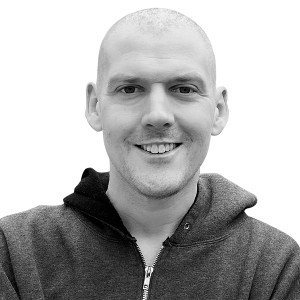
How I’m Beating Cancer
Richard Rohl
Age: 39
Treated at: Tufts Medical Center
I got COVID around the start of 2022. I felt fatigued and generally achy, and I had low energy and trouble with my breathing. That lasted a week or so, and I started to feel better, but the shortness of breath and achiness lingered for another few months. I thought I had long COVID.
Then I was out in Vermont looking at some beverage manufacturing equipment for my company, Novel Beverage Co. I wasn’t doing anything strenuous, but all of a sudden, it became hard for me to even walk without getting so winded that I had to stop and sit down. I went to the ER at the University of Vermont Medical Center. That’s where they did a CT scan and found a germ cell tumor the size of three grapefruits in my chest. It had collapsed my left lung, putting pressure on the nerves in my chest. It was also crowding out my heart. The doctors estimated that another few weeks and my heart would have stopped.
It was very surreal. Up until that point, I had considered myself to be a very healthy guy. I run 5Ks and do triathlons; I’m a regular golfer and am always heading up to Sugarloaf for skiing. To hear that I was weeks away from death was shocking in a way that I’ve never experienced.
I did some research and found that Tufts is a great place to treat this form of cancer. My understanding is that had this been 20 or 30 years ago, it was basically a death sentence. In the past, doctors would see this big tumor and go in and surgically remove it, but the outcomes associated with that were pretty bad. They figured out somewhat recently that the optimal way to do it is to go through chemo to shrink the tumor and kill off any extraneous cancer cells, and then do surgery.
I was an inpatient for the first week, and then I did outpatient for rounds two, three, and four. The tumor really responded to the chemo; over the course of just 24 hours, I could already start to feel relief on the nerve on my left shoulder blade that was being pressed.
I finished chemo in early June. I had the surgery to remove the tumor on July 27. When they analyzed it, they found that the entire tumor mass was dead cells, so it followed logically that all of the other stragglers in the body were dead too. It was hard to process. I couldn’t accept that I was cancer-free yet.
I think I finally began to feel it when I was able to walk a few miles, which took me four or five days. I was able to run a 5K this weekend and put up a good time for me. It was surreal in the opposite direction. —As told to Brittany Jasnoff
Pay It Forward
How to help raise money for cancer causes in 2023.
Boston Hot Pink Luncheon & Symposium
What it is: A panel of leading local breast cancer researchers and experts sharing the latest news in the field over lunch.
Benefits: The Breast Cancer Research Foundation, the largest private funder of breast cancer research in the world. Last year, the event raised more than $330,000.
When: Fall 2023.
Where: The event is typically held at iconic event spaces like the Boston Harbor Hotel.
Who goes: Past attendees have included now-Governor Maura Healey and former First Lady Lauren Baker.
Pan-Mass Challenge
What it is: A massive bike-a-thon that raises more funds for charity than any other athletic fundraising event in the country.
Benefits: Dana-Farber. In fact, the Pan-Mass Challenge is its single largest contributor, raising $69 million in 2022 alone.
When: The first weekend of August each year.
Where: 16 routes spanning 25 to 211 miles from Sturbridge to Provincetown.
Who goes: Local notables who ride include chef Jody Adams, WBZ anchor Lisa Hughes, and Pan-Mass Challenge founder and director Billy Starr.
Rock ‘N Rumble XII (Haymakers for Hope)
What it is: A charity boxing competition for amateur and first-time boxers. Participants train for the experience through partnerships with local boxing gyms and are matched with a competitor of equal ability.
Benefits: Organizations chosen by the fighters, including Dana-Farber, Boston Children’s Hospital, and smaller nonprofits such as Family Reach and Camp Casco.
When: May 11.
Where: MGM Music Hall at Fenway.
Who goes: Fighters range from C-suite execs to firefighters.
Boston Key Gala
What it is: An elegant gala featuring gourmet food, music, a live auction, and an award presentation ceremony.
Benefits: The American Cancer Society’s Hope Lodge in Boston, a free place for cancer patients and their caregivers to stay while undergoing treatment. The 2022 event raised over half a million dollars.
When: October 13.
Where: The Omni Boston Hotel at the Seaport.
Who goes: Business leaders, philanthropists, and local media personalities. Last year’s gala was emceed by 7News reporter Victoria Price.
Cooking Live with Ming Tsai
What it is: A live cooking event featuring curated cocktails and a multi-course dinner crafted by local chefs.
Benefits: Family Reach, an organization that helps families deal with the financial burden of a cancer diagnosis. One ticket runs upward of $2,500.
When: Summer 2023.
Where: Past events have been hosted at popular restaurants like Davio’s in the Seaport.
Who goes: Families supported by Family Reach and an array of world-class chefs who work their magic alongside Tsai.
Massachusetts by the Numbers
The local cancer digits you need to know.
42,190
Estimated number of new cancer cases in Massachusetts in 2022.
12,520
Estimated number of deaths from cancer in Massachusetts in 2022.
1
Massachusetts’ ranking among states for women aged 45 years and older who are up-to-date on their mammography.
2,760
Estimated number of deaths from lung and bronchus cancer in Massachusetts this year, the cancer with the highest mortality rate in the state.
136.9
Average number of women per 100,000 diagnosed with breast cancer in Massachusetts each year.
107.7
Average number of men per 100,000 diagnosed with prostate cancer in Massachusetts
each year.
500+
Number of cancer specialists at Mass General Cancer Center.
188,242
Number of infusion treatments performed at Dana-Farber in 2021.
402 million
Amount, in dollars, Dana-Farber raised through philanthropy in 2021.
First published in the print edition of the February 2023 issue, with the headline “The Big C.”


